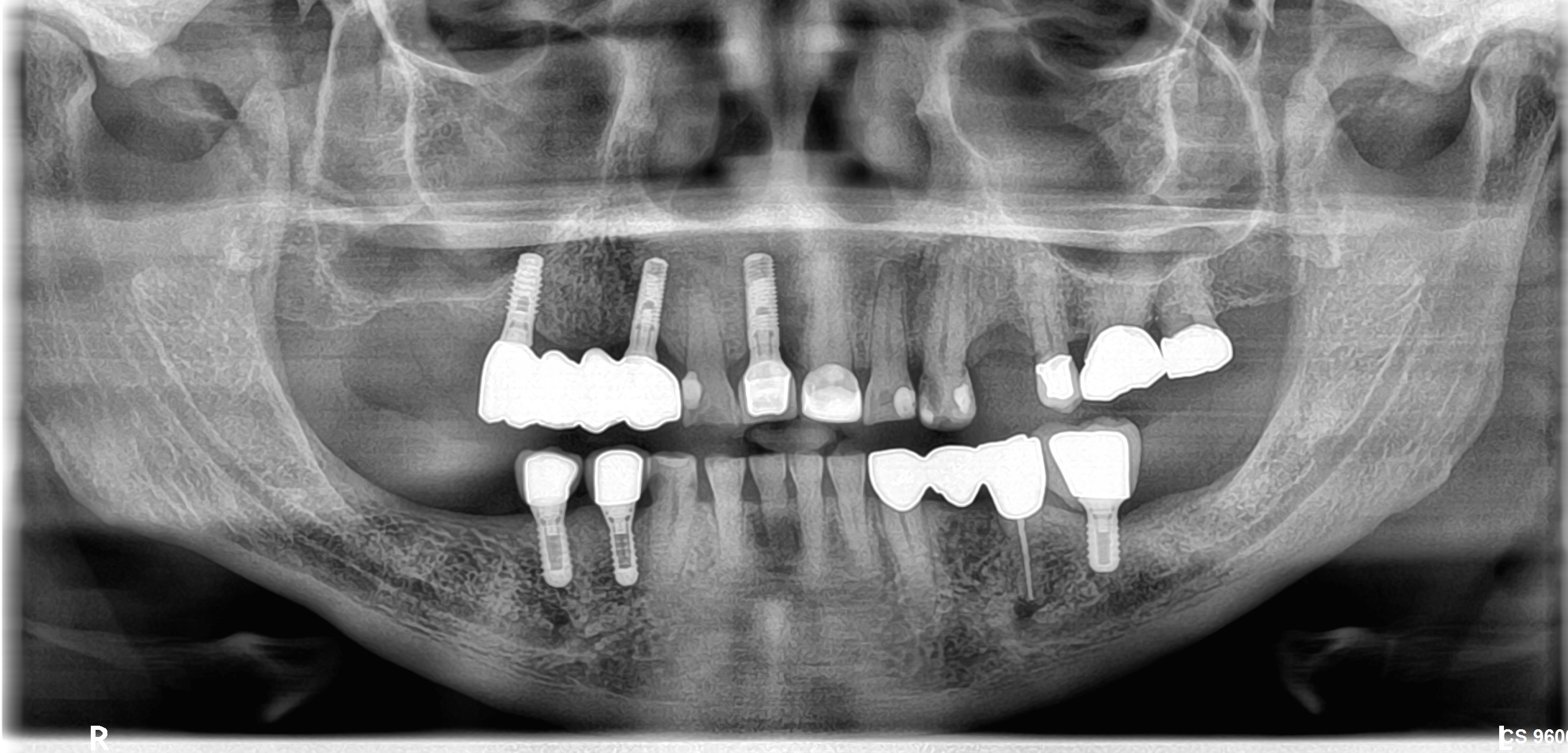Strange Case of Removal of upper lateral incisors implants: Thoughts?
I have a new patient, Â 24 year old male in excellent health, who presented with a very strange implant case. Â This is a description of his condition, in his own words:
“I was born with agenesis of my maxillary lateral incisors. The maxillary canines erupted in the place of the missing maxillary lateral incisors and I had no problem with that. Â But when I was 18 years old my dentist pulled the teeth back into their normal positions. The backward movement of my canine teeth had severe repercussions across my head. I saw and felt the bones of my head moving and compacting. Since then, I feel my concentration, imagination and intelligence significantly diminished, and my face changed.
The point is that in the place of missing maxillary lateral incisors the dentist has installed implants, so I can not try to turn back the movement of canines. I wish I could do that to see what happens, to see if I improve. It would be great if there exists a way of taking out the implants without risk. Dentists in general refuse to take out my implants away because they don’t believe what happened to me. I’ve tried with kinesiology, osteopathy, acupuncture, neural therapy, but I still feel my skull compressed and my mind affected. My osteopath told me that effectively I have the bones of my head compressed, but the therapy has not help me enough yet and I have already had lots of sessions. I need to know if there is anybody available to remove my maxillary lateral incisors implants. Â What would be the risks of doing that and if there is any new low risk technique to do it, no matter how much it costs. Thank you.”
What should I do? What would you do and tell him in my place? The more information and opinion the better. Â I cannot find any references for this in the literature.
![]](https://osseonews.nyc3.cdn.digitaloceanspaces.com/wp-content/uploads/2012/07/fotos-y-l%C3%83%C2%ADneas-para-mostrar-JPG-mitad-2-e1341781020970.jpg)
![]Removal of Lateral Incisors Implants Pan](https://osseonews.nyc3.cdn.digitaloceanspaces.com/wp-content/uploads/2012/07/panor%C3%83%C2%A1mica-dental-2011-2.jpg)
![]Removal of Lateral Incisors Implants Pan Large](https://osseonews.nyc3.cdn.digitaloceanspaces.com/wp-content/uploads/2012/07/panor%C3%83%C2%A1mica-dental-2011-e1341780860279.jpg)
















